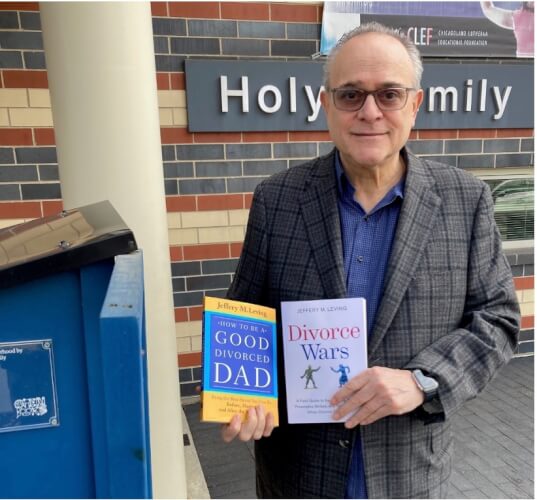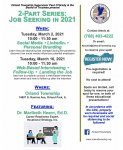Midnight Flight: Chapter 12 — Looking Back
One family’s experience of White Flight and the racial transformation of Chicago’s South Side (an online novel)
By Ray Hanania
Midnight Flight, (C) 1990-2020 Ray Hanania, All Rights Reserved
The families that moved out of South Shore Valley were the real losers.
We were the victims, too, the people who left. We did it to ourselves.
We fled before we even knew what we were fleeing from. And we never knew where we were running to.
We had only heard about the “suburbs,” but never really understood the term. It was a whole new life that we were unprepared to adopt. Uncharted in our minds. And in many cases, the welcomes we received were unenthusiastic and confrontational.
The Black people who moved into our homes brought a whole new experience to South Shore Valley, and they made it an even more wonderful community.

The benefits and the problems that existed before we left, remained the same as they had been when we were gone. If you put the two actions on a balance — White families running and Black families moving in — clearly they both contributed to the problem, but it was the flight that caused the most tension. Think about it. A Black family moving into the area — or any family moving in, for that matter — is really a positive driven event. They came to improve themselves. White families moving out, however, were motivated by negative feelings of fear, uncertainty, and in some cases, even hatred of the Blacks who were moving in.
We were too frightened to see that, though.
People who stayed, like Sharon Zurek, a close friend who I had not seen again until embarking on this project, were the fortunate ones.
They kept what they had, separated themselves from the weakness of the people who left, and embraced a whole new life rich in experiences and culture that made them better people.
I have often gone back to 89th and Luella, just to wonder at the beauty of that street. I was impressed at how well kept the neighborhood had remained all those years that I was gone. Human nature is already arrogant, making one believe that they are crucial to success in any form. We left. The neighborhood, naturally, would fall apart.
It didn’t.
The reasons that caused the White Flight – perceptions and fears that Blacks moving into the area would bring with them crime and lower economic conditions – were not realized. The fears we had that seemed so important 30 years ago about Black families moving in, never really materialized. Maybe leaving was the best thing many of the Whites who fled could have done for the area. Maybe, moving proved that the White families, and not the Black families who moved in, were the ones who really didn’t care about the community.
On a recent visit, I stood there looking down the street with its umbrella of huge Elm and Maple trees. Squirrels jumped around the lawns at the foot of the tall trees, pausing to examine nuts, sticks and other garden objects. The trees form a beautiful green canopy of leaves and branches that arch over the well-kept, manicured lawns and polished cars parked curbside.
Memories of that wonderful time are still vivid.
I could see the shadows of my friends and neighbors still on the sidewalks and in the windows. I remember every one of their names. I know their houses, by location and by looks, and also where each of them had lived.
Jeff Brody. Walter Flood. Rickie Kramer. Jack Stone. Sheldon Asher. Terry Shy. Michael Rothman. Phillip Resnick. Sherman Sloan. Larry Kagan. His cousin, Steve Kagan. Cathy Lee. Art Wittert. Jay Kraus. Sharon Zurek. Vicky Ferguson. Robert Roubitchek. Nancy Cranston. Larry Kogan. Bruce Elegant. Paul Brooks. Laura Badner. Sherry Weingart. Robyne Halevy. David Gzesh. Judy Friedman. Suzy Mulstein. Larry Green. Stuart Zimmerman. Howie Fishman. (I apologize if I have spelled some names wrong. I never did very well in Mr. Natzche’s English class at Warren. And, I apologize if I have left any names out.)
There were so many good friends. I can say their names and see each one of their faces. A smile. Just the way they looked, back then. (A few I have since seen, a few at the Bowen reunion and few I just heard about.)
We were all there at a wonderful time in our lives. When everyone was a friend, and when there was real meaning in the words “community” and “neighborhood.”
My memory is like a street map that is no longer valid and out-of-date. Yet, few physical things changed.
Calumet Park at 89th and Jeffery Boulevard is renamed in honor of Black Olympic Gold Medalist Jesse Owens. But the Park Field House remained there, intact, in the center of the park. Undisturbed. The curving pathways that ran through the park are the same, passing by the cement water fountains, the basketball courts and the football fields.
Black kids played there, the way White kids had played there 30 years before. Carving initials in the same dark green Chicago Park District benches. Throwing basketballs into the hoops, the way we once did.
I stand there in a truly present tense.
I take one more drive past my old house before I return to a suburb where, after more than twice as many years of living, I don’t know the names of my own neighbors. I pull over and just stare at the house for a moment filled with years of memories.
In front of my home I see the Lilac bush that my father plants on the lawn. I remember vividly watching my father digging out the earth. He places the shovel on the grass and carries the small, burlap wrapped bush and places it in the hole he has just dug. Dad pushes the rich black dirt back over the plant’s roots, and pats the ground around it down.
He asks me to pull the hose to the front from the side of the house. I do it, dragging it across the grass. An aluminum sprinkler is attached and my dad unscrews it.
“We have to water it. We have to enrich it. We paid for it and we don’t want it to die.”
I nod as dad speaks. He smiles. It is a content smile. “One day it will be beautiful.”
I don’t quite understand what he means, but there is a message that becomes apparent years later.
That bush was only two feet tall back in 1962 when he placed it in the ground in our front lawn. Today, it towers above the two-story home itself.
The tree is still there in front of our old house. Flowers blossoming. Branches swaying in the light breeze, filled with sparrows and other birds fluttering about. The broad leaves are a bright, rich green. I can see them wave.
Dad, you were right.
It is beautiful.
Midnight Flight
Chapter 3: A Beautiful, Idyllic Community
Chapter 4: Written Long Before
Chapter 6: Alone in the Playground
Chapter 8: In the Eye of the Storm
Chapter 10: The Sub-Urban Life
Chapter 11: Friends Left Behind
Chapter 13: Notes from Readers


























